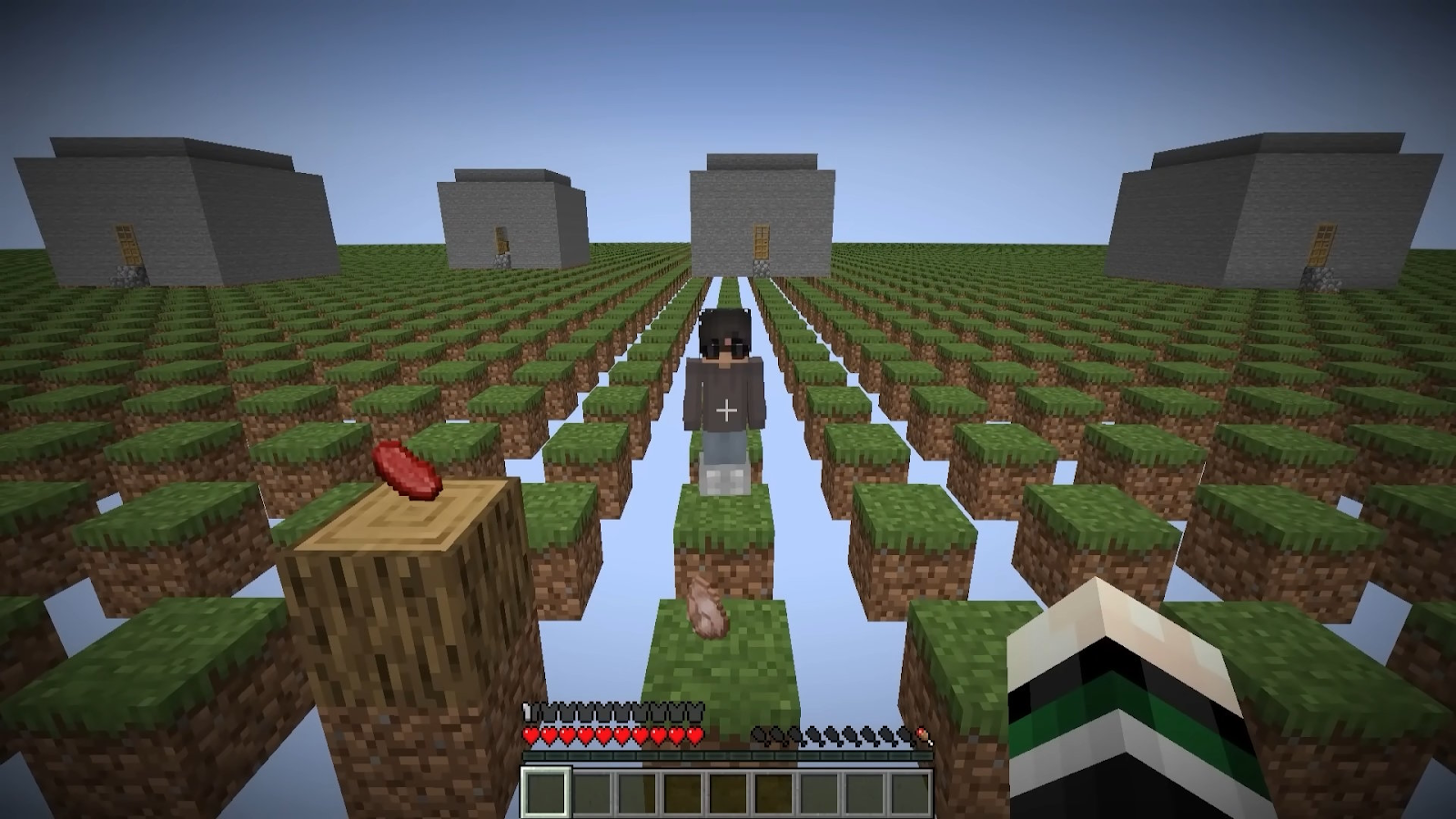Minecraft Building Has Actually Taught Me Things
Hey there! This week I was pretty busy with school and other stuff, so I ended up leaving writing a blog post for the last second. But then a dilemma struck me: I had no idea what to write about! Usually I have some sort of life story to talk about, or a new piece of media I want to share with my readers, but this week has been pretty quiet, and I haven't really watched anything this week besides JJK with Wade, and I already talked about that earlier this week. So I opted to do what I usually do when I need to clear my mind and think: fly around my Minecraft build world!
I've had this Minecraft world for over half a decade now, and it's been populated with a field of builds and ideas I've had throughout the years as far as the eye can see (or at least, as far as the game can render). However, about three years ago, I started working on one mega project, aiming to create an immersive world out of nothing with my bare hands, instead of individual projects like I used to. As a result of this project, not only have my building skills drastically improved, but I've found myself learning a lot about art, history, and architecture as a result of my desire to improve my buildings in Minecraft. As I flew around, trying to think of something to write about, I ended up remembering a couple random things I looked into thanks to this project, so I'm going to ramble a little about them now!
 |
| Da Vinci's sketch of a tree |
Da Vinci's Rule of Trees
Something I've always struggled with building in Minecraft were custom trees. Sure, I could always just plant one of the many types of naturally occurring tree types coded into the game, but those always tend to look a little out of place next to nicer buildings. So what many people do is build their own custom trees, with more detail and variation than normal Minecraft trees. The issue is, it's very hard to make a good looking tree, especially with no knowledge about trees or how they grow.
Somerset Medieval Church
 |
| The Somerset Medieval Church |
Another type of building I was trying to improve at was some sort of chapel/church building. But instead of building a megachurch or a cathedral, I wanted to emulate the look of a more local place for worship, scaling down the building to fit in better with the other smaller villages houses. In my search for reference material, I came across the Somerset Medieval Church, which caught my attention because of its western tower that juts out from the rest of the chapel, which is built in a more traditional chapel scale and style. This style of church differs from the traditional cruciform floor plan of medieval churches, where the building would be laid out in (you guessed it) the shape of a cross, with a central tower in the middle. The style I opted for took inspiration from the western tower plan, which offsets the balance of the build and draws the eye in an L-shaped pattern.
 |
| Left: Church of the Holy Cross, Middlezoy Right: my recreation of window depth |
I only had enough time to write about two of these examples today, but I had a lot of fun connecting my in-game building projects to real-life concepts, so be on the lookout for more of these types of the blogs in the future!




Comments
Post a Comment